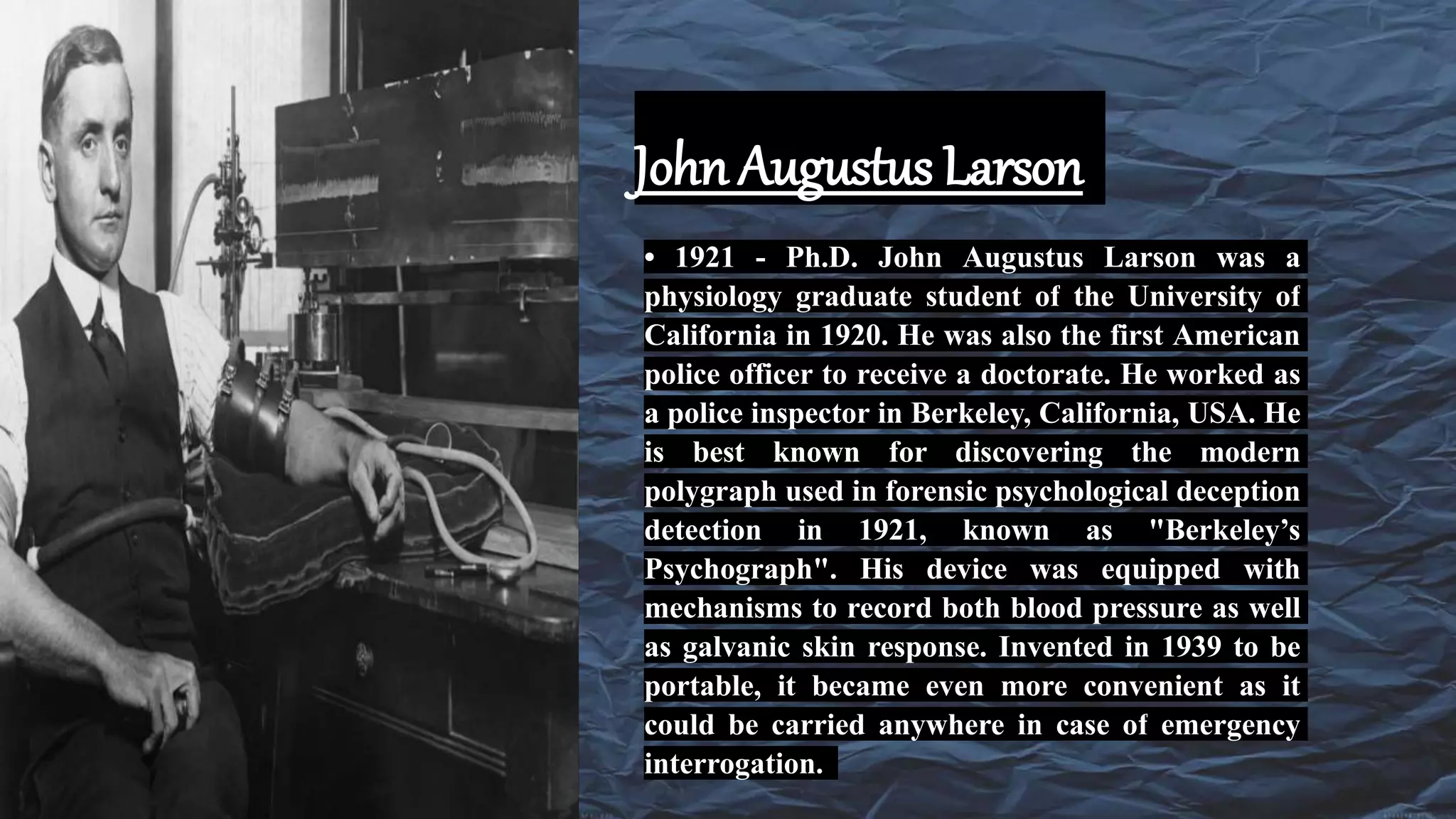The polygraph, also known as a lie detector test, measures physiological indicators such as blood pressure, pulse, respiration, and skin conductivity to determine whether a person is lying. It was developed in the early 20th century based on the theory that physiological responses differ when a person is being deceptive versus telling the truth. The test involves attaching sensors to the subject and asking them a series of questions while recording their physiological signals. An examiner then interprets the signals to assess whether the subject's responses are consistent with lying. However, the reliability of polygraph tests remains controversial.























